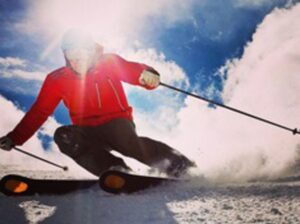In evaluating and teaching high-speed running mechanics, a coach must give you key points consciously focus on as you learn to reprogram your motor patterns. It is useful to break down the movement in a way that is consistent with a systematic teaching progression.
Before beginning any run, make sure you warm up and stretch. This is best achieved by performing any combination of moves that get blood flowing to your gluteus maximus (glute), calves, hamstrings and quadriceps.
So what exactly should you do to warm up? I suggest a dynamic movement series which builds up your muscles that cause technical errors in your running form. (See the end of this article for a sample Dynamic Movement Workout.)
Having the right information at your fingertips increases the possibility that you will run faster, be stronger in your run and your times will be better than ever.
When most people run, they take the path of least resistance which means taking a smaller stride, and are rather comfortable; you can run for an extended period of time doing that. What you need to do is make sure that all the muscles in the lower body are really active so that you can get a good cardiovascular workout while maximizing distance and effort.
Choose an interval style running workout in order to improve your oxygen capacity, and therefore help you to run faster and with better form. A traditional VO2 Max exercise should start with a vigorous pace you are comfortable with, and run at that pace for three minutes, then rest for one minute to recover. During this minute rest, you will bring the tempo and pace down to a light jog. You will repeat these intervals of three minutes of work and one minute of rest, five times.
But how do you know that you are running with correct form during this interval workout? First, you must ensure that you are elongating your stride so that you are not just your working your quadriceps. The glute is the largest muscle in your body; if your stride is too short, you are not engaging the glute at all. By elongating your stride, you get the entire lower body working together and at once. It’s a lot more work, but it’s also more efficient. Therefore, since it’s more efficient, you are going to actively work more muscles during the course of the effort, which means you are maximizing your time.
Secondly, increase your back kick by lifting your heel up higher behind you, while using a big open stride. By increasing the back kick, you engage your hamstrings, as well. Relax your arms and tuck them into your side so that they do not work against you. As you get better and more comfortable in your correct running form, you must challenge yourself to keep a vigorous pace in those three minutes and ride out your stride so that you can feel your hamstrings engage
End your workout with a three-minute cool down and a static stretch on the quadriceps, hamstrings, inner thigh leg swing and calf stretch on both sides. This workout provides simple foundational techniques that will improve your running efficiency and ultimately lead to running correctly and faster.
Dynamic Movement Circuit
60 meters (essentially the length of football field)
– Alternate build up going down with a skip coming back.
– Skipping forward with arms swinging across body.
– Skipping forward with alternating arm swings up/down.
60m easy stride
– Side skipping with arm circles down and back.
– Cariocas emphasizing fast thigh drive to the ground.
– Running backwards emphasizing a long reach.
60m easy stride
– Skipping high knees up and out.
– Skipping lateral straight leg.
60 easy stride
– Jumping jacks moving forward to 15m, then a jog for the next 15m.
– Jumping jacks with high knees clapping under knees.
– Straight leg bounding.
– Toe touches.
The next section of the warm-up is done with 30 meters.
– Walking on toes.
– Walking on heels.
– Side stepping toes then heels – left and right.
– Walking pulling knee to chest.
– Walking opposites – elbow to knee.
– Walking swinging leg up and touching toes.
– Walking quad/glut holds.
– Cross over jumping jacks.
The following lunges are done with 15 repetitions on each leg.
– Static lunges (alternating).
– Backward lunges.
– Front lunge with opposite elbow reaching to leg extended.
– Diagonal lunge with opposite elbow reaching to leg extended.
– Leg swings front to back.
– Leg swings side to side.
With 15 years of professional training experience, Jude Massillon understands the physical requirements of competing at the highest level. He has used his experience to develop strategies that teach athletes how to enhance their performance and reach their full potential. It is his desire to help athletes improve upon their own natural abilities using his expertise in movement and the energy requirements of each sport. Massillon has trained professional athletes in track & field, football, soccer, tennis and lacrosse. His background includes:
• Training 138 All-American high school athletes in 5 different sports, including 18 in swimming alone, over the past 2 years
• Assisting in the training and conditioning program for 40 first-round NFL draft choices
• Training medalists at every level of track & field in high school, NCAA and the Olympics
• 15 years as a professional track & field coach with national champions from 16 different countries
• Nike-rated as one of the top 150 trainers in the U.S.
• Certified in Muscle Activation Techniques (MAT)
• ACSM, AFAA, NSCA, IFA, ACE, IAAF, NIKE SPARQ Certified
———————————————-
CoachUp is the safest and easiest way to find a coach for personalized training. With our 100% money-back guarantee and vetted coaches, anyone can achieve their full athletic potential. Find your perfect coach today and become the athlete you want to be!
How useful was this post?
Click on a star to rate it!
Average rating 0 / 5. Vote count: 0
No votes so far! Be the first to rate this post.



